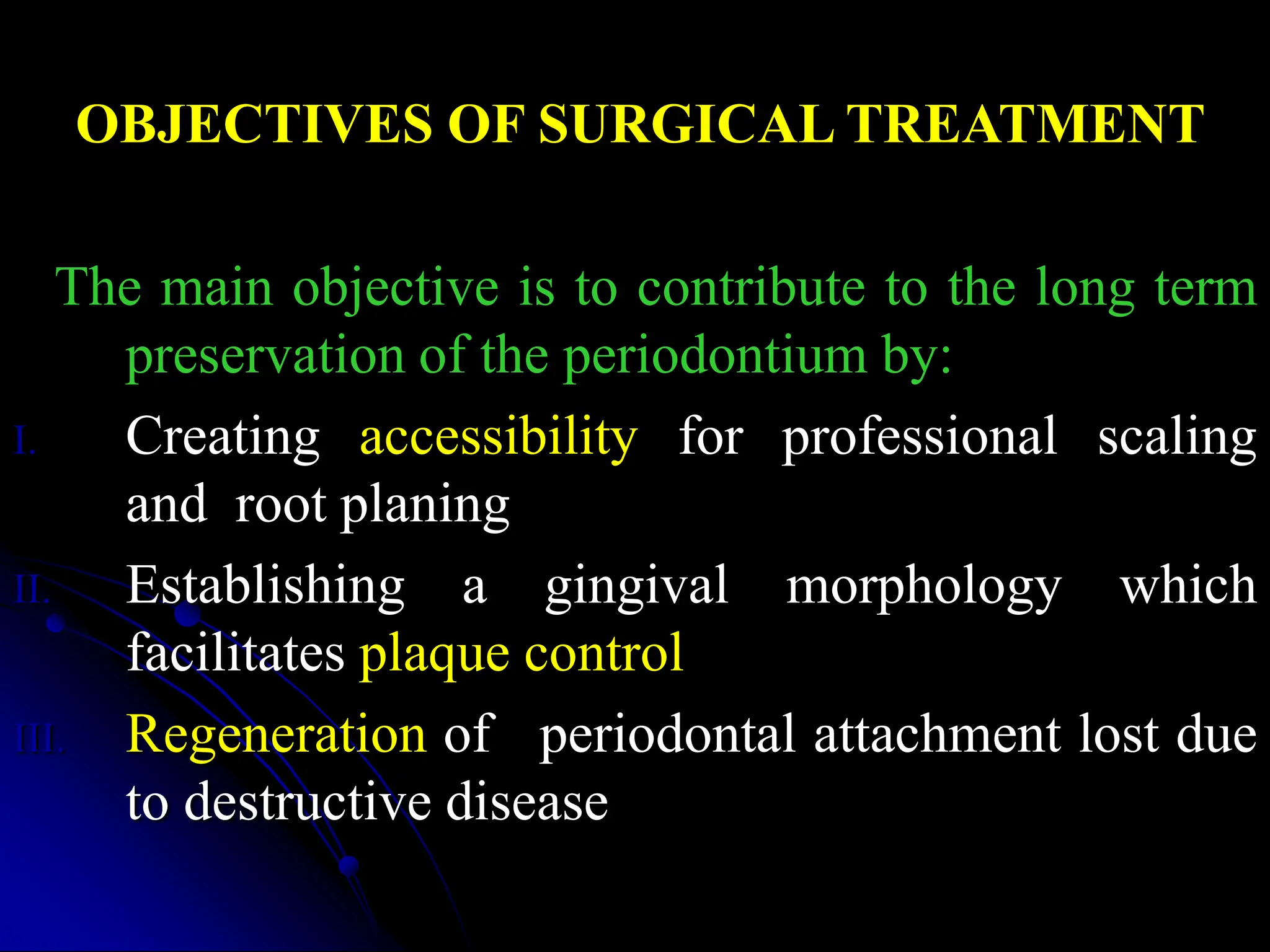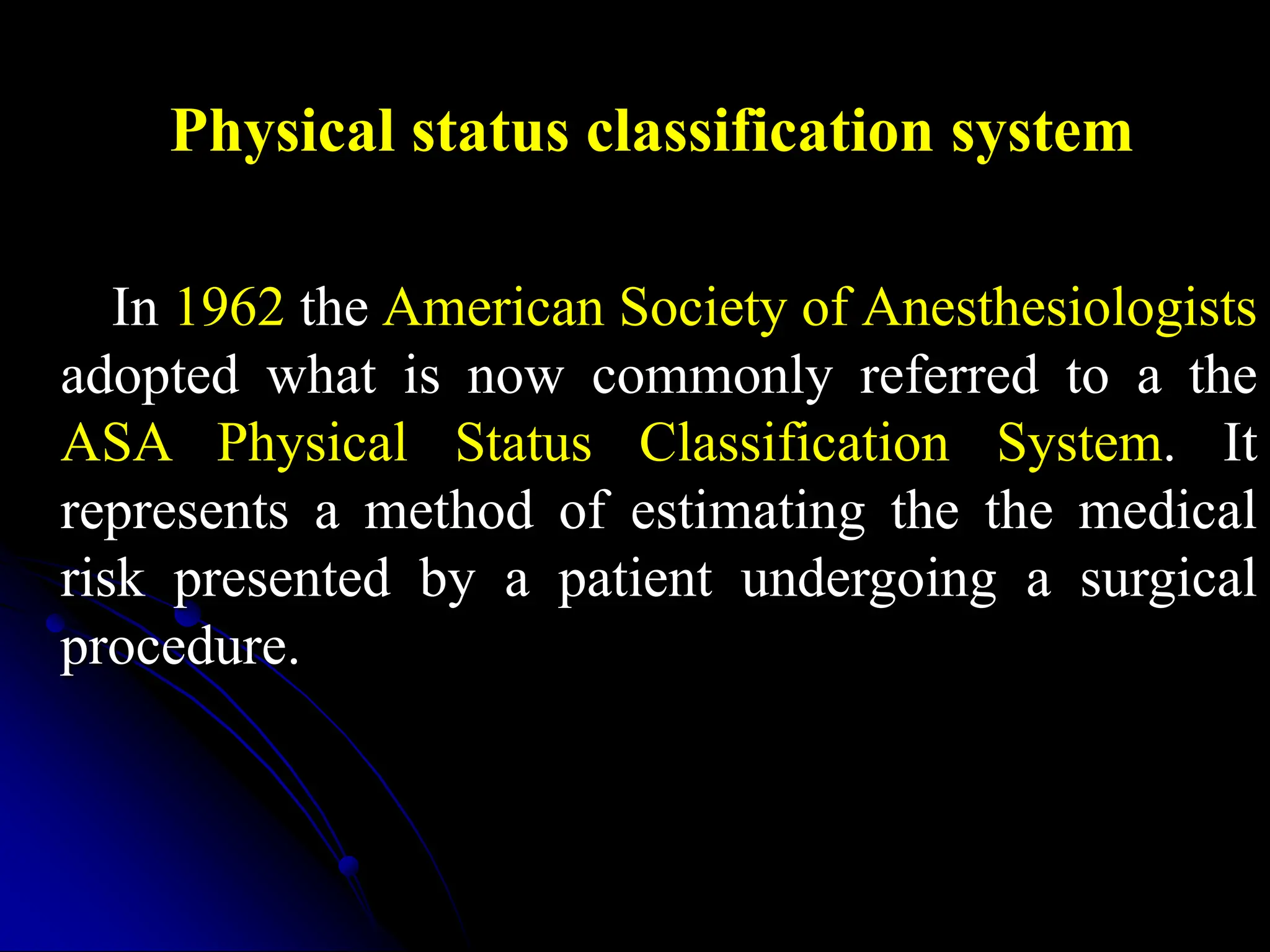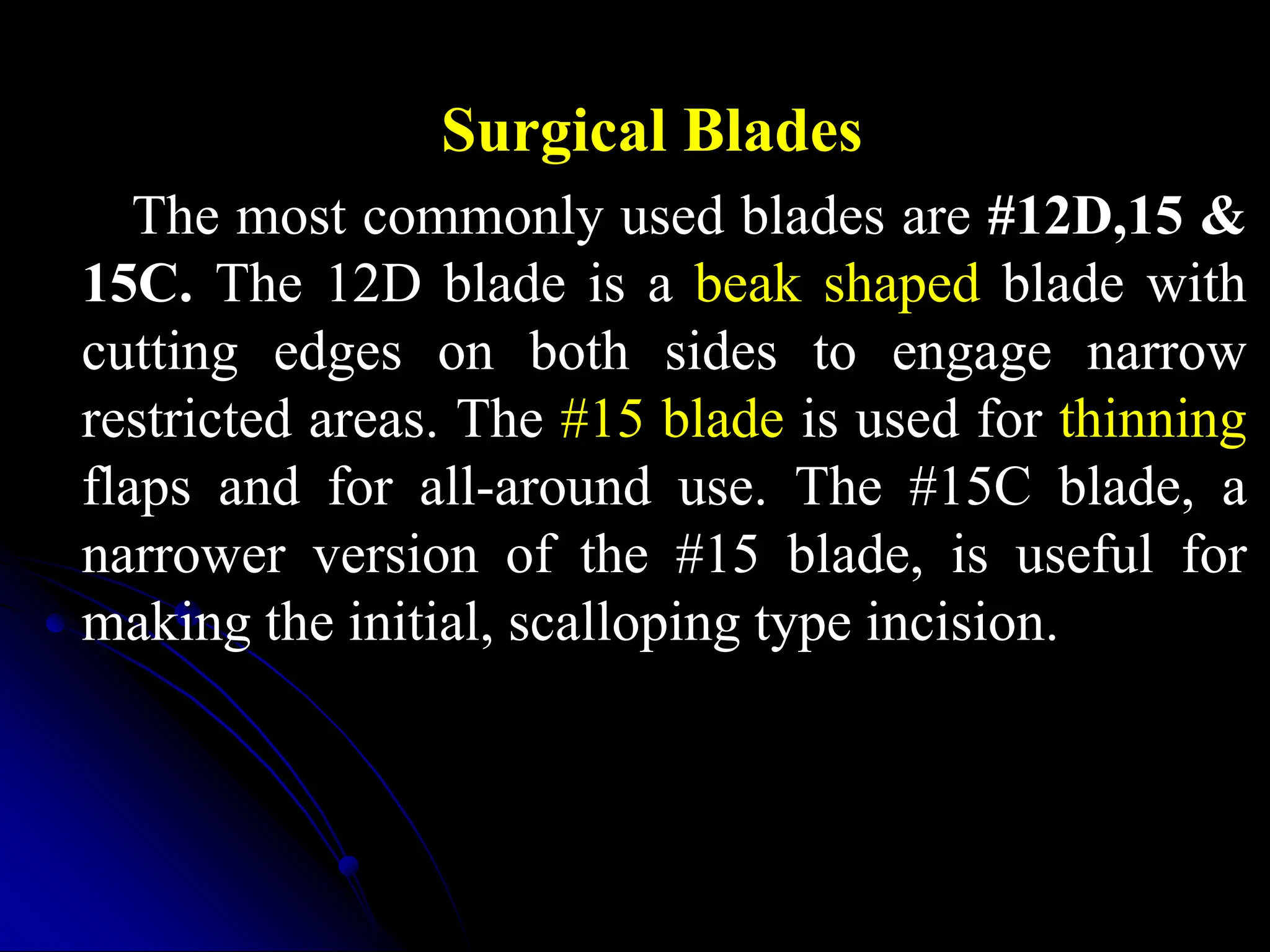This document outlines principles and procedures for periodontal surgery. It discusses the objectives of surgical treatment which include improving accessibility for cleaning, establishing favorable gum morphology for plaque control, and regenerating lost attachment. Pre-operative preparation involves medical evaluation, stress reduction protocols, antibiotic prophylaxis, and premedication. The setup for surgery includes standard instruments like knives, curettes, chisels and hemostats as well as materials like sutures, dressings and trays. Careful planning and preparation of the patient and equipment is necessary for successful periodontal surgery.

























































































